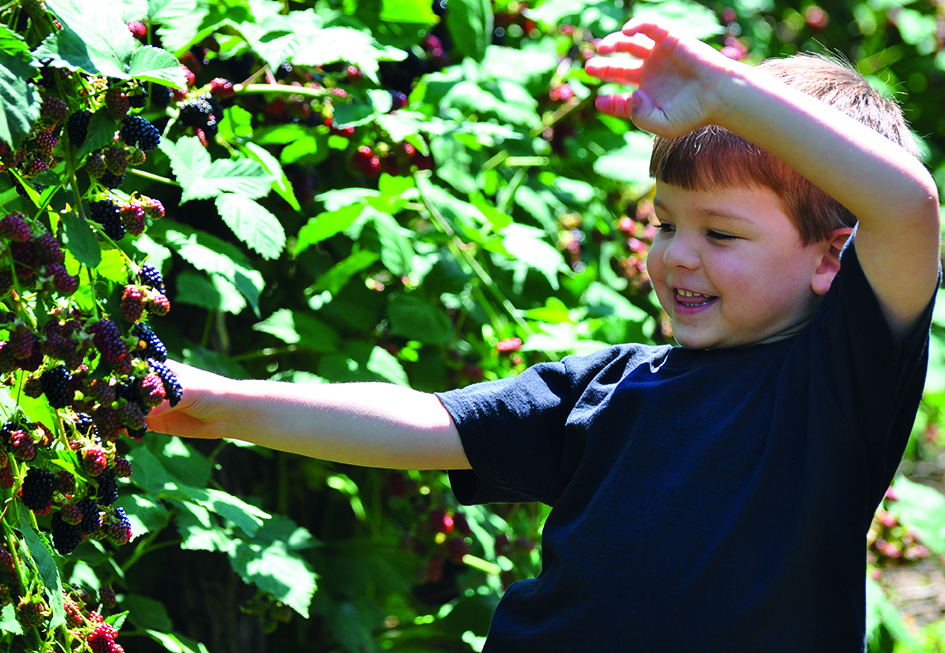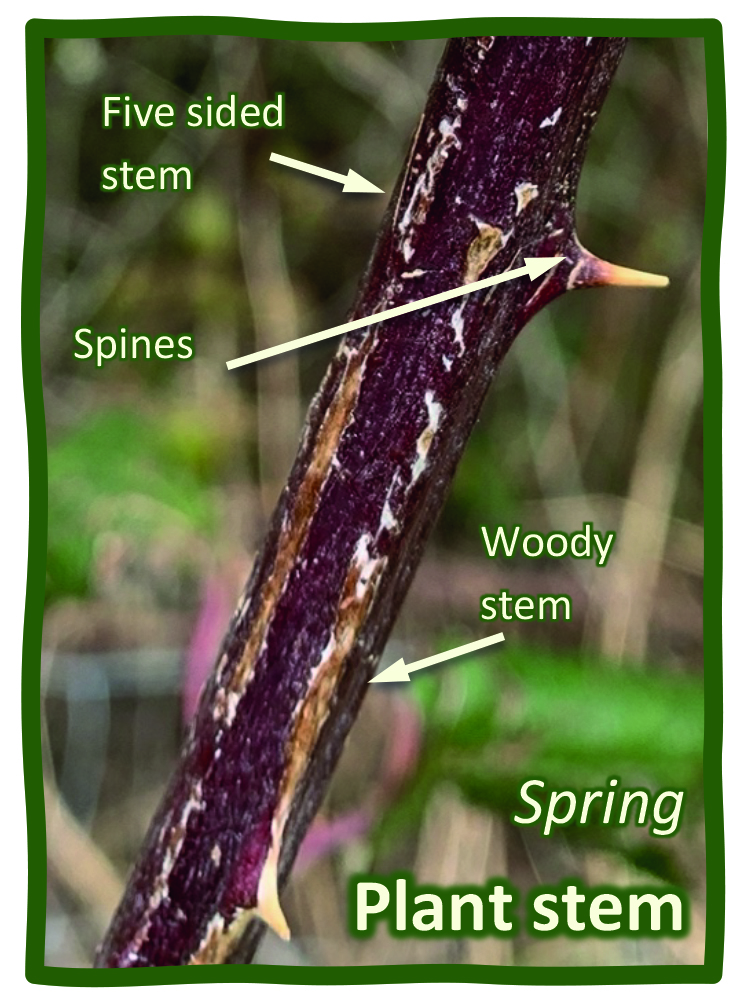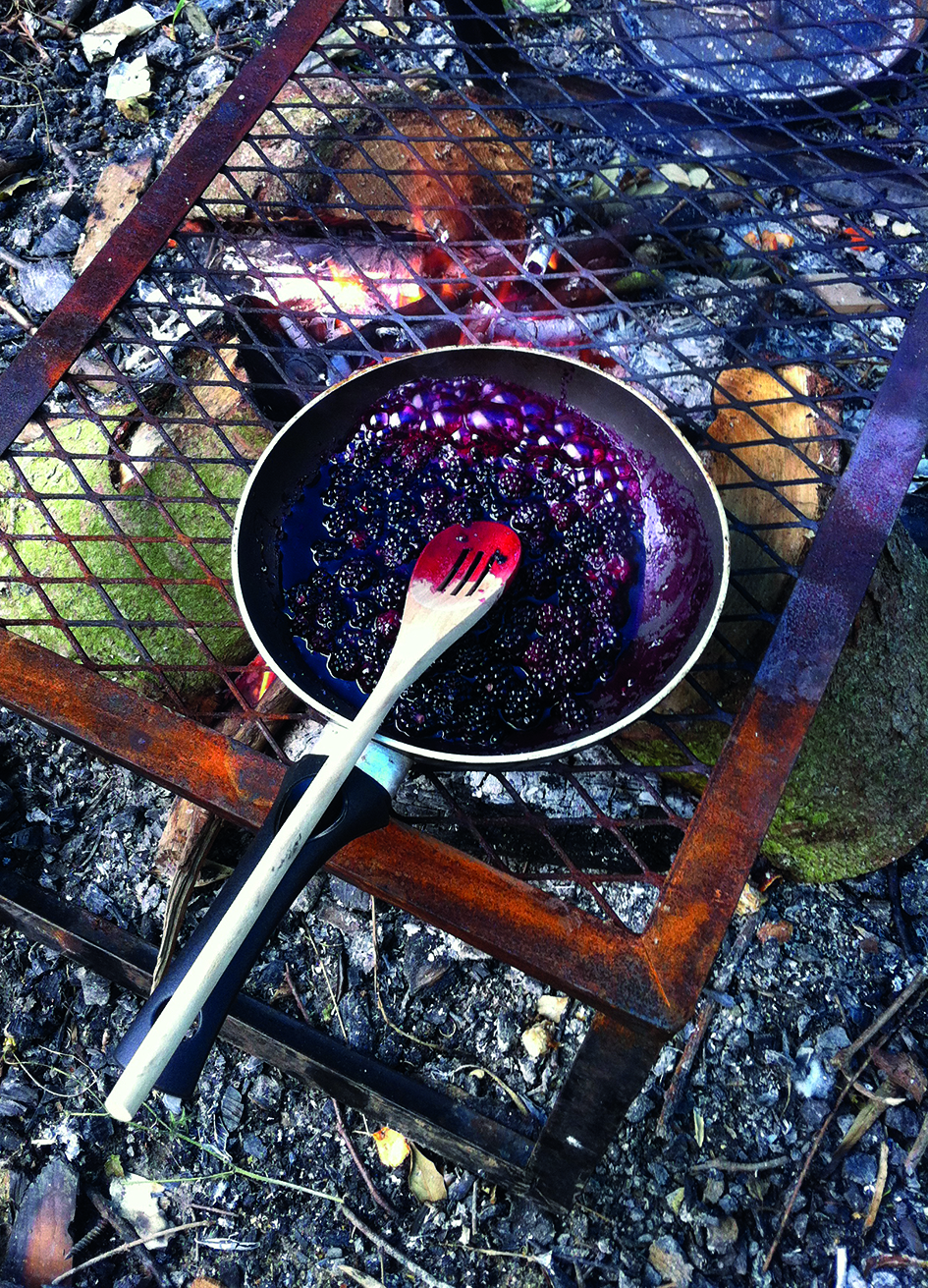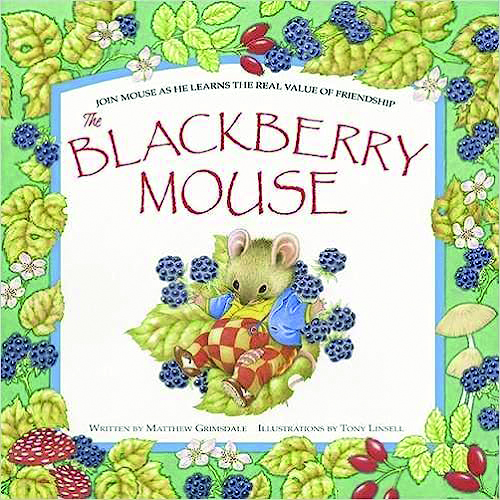
plant of the month: blackberries
 Blackberries – Rubus fruticosus – are common and easy to identify. The fruits start out as tiny green clusters growing from the remains of the beautiful white spring flowers. They ripen to a soft pinky red colour, and then all of sudden, the brambles are overflowing with luscious, deep purply-black berries. The plant itself is voracious and will grow anywhere it gets the chance, spreading its sharp thorny branches along fences, hedgerows and waste ground.
Blackberries – Rubus fruticosus – are common and easy to identify. The fruits start out as tiny green clusters growing from the remains of the beautiful white spring flowers. They ripen to a soft pinky red colour, and then all of sudden, the brambles are overflowing with luscious, deep purply-black berries. The plant itself is voracious and will grow anywhere it gets the chance, spreading its sharp thorny branches along fences, hedgerows and waste ground.
fact file
- Highly coloured fruits and vegetables are understood to be particularly healthy, and superfood blackberries are full of fibre, antioxidants and vitamins C and K (a superhero feature if ever there was one). Really, it's our duty to forage and eat as many as we can.
- The berries are actually made up of up to 30 seeds called drupelets. Can children use tweezers to separate them?
- Show children a picture of the Haraldskær Woman ‘bog body’ that was buried in peat for thousands of years – do a Google image search for one that's not too graphic. Scientists have determined that her last meal included blackberries, showing not just how long they have been an important food source for humans but also the time of year she died. Wikipedia has lots of other details about her.
myth, magic and culture
 Perhaps don't mention this to the children, but an ancient aphorism that discourages late picking of blackberries – by October, they've often gone mildewy or rotten – says, ‘Devil spits on the blackberries’. Apparently Lucifer was banished from heaven on Michaelmas (29 September) and landed in a blackberry bush, cursing them and swearing that anyone who ate them after that date would become ill.
Perhaps don't mention this to the children, but an ancient aphorism that discourages late picking of blackberries – by October, they've often gone mildewy or rotten – says, ‘Devil spits on the blackberries’. Apparently Lucifer was banished from heaven on Michaelmas (29 September) and landed in a blackberry bush, cursing them and swearing that anyone who ate them after that date would become ill.- Blackberry leaves contain flavonoids, which heal sore throats or mouth sores, and ancient people used them for healing, as well as the pigments for dyes.
- Blackberries have traditionally been an important food source during winter; they were being made into preserves as far back as 8,000 years ago.
aims of this series
Many of us suffer from ‘plant blindness’. But if we don't notice common plants around us, how can we teach the next generation to care for plants which feed us, give us medicine, clothes and many other things upon which we depend? So, every month during 2023, we’ll look at some of the main features of common plants and explore how to make the most of them for play and learning.
There are a few tools and resources that will allow children to explore blackberries without getting prickled, so if you don't already own them, put out a call to parents and local businesses to see if they can donate, and check charity shops and car boot sales before you buy new:
- secateurs to cut stems
- a litter-picker to grab hold of high-up prickly stems and bring them down to the children's level; the highest stems are of course where all the best berries are!
- jewellers’ loupes and magnifiers for close examination of the interesting parts of a blackberry.
STEM springboards
 Use secateurs to cut lengths of blackberry stem for children to examine. There are several observations they might make: the stems are not round, but in fact five-sided; older stems are quite woody and strong, younger ones are green and flexible; the thorns are sharp and can point up or down the plant to catch out the unwary; the berries are made up of many tiny berry seeds and some of these will have a microscopic hair – these were the stigma in the flower. Print the Pappus Blackberry ID sheet so children can see what the plant and flowers look like at different times of the year: www.pappusproject.eu/plant-id-sheets.
Use secateurs to cut lengths of blackberry stem for children to examine. There are several observations they might make: the stems are not round, but in fact five-sided; older stems are quite woody and strong, younger ones are green and flexible; the thorns are sharp and can point up or down the plant to catch out the unwary; the berries are made up of many tiny berry seeds and some of these will have a microscopic hair – these were the stigma in the flower. Print the Pappus Blackberry ID sheet so children can see what the plant and flowers look like at different times of the year: www.pappusproject.eu/plant-id-sheets.- Encourage children to order or make patterns with blackberries, considering them in terms of size – make matching pairs, line up from smallest to biggest, weigh them in groups of ten…
blackberry projects
 As you may know after laundry woes, the pigment in blackberries makes a permanent dye… or stain, depending on how you look at it. Squashed blackberries will leave marks on hands, clothes and even paving slabs – so let children experiment with blackberry mark-making. The Pappus Blackberry Playful Springboard includes instructions for making permanent dye from blackberries – find it here: www.pappusproject.eu/play.
As you may know after laundry woes, the pigment in blackberries makes a permanent dye… or stain, depending on how you look at it. Squashed blackberries will leave marks on hands, clothes and even paving slabs – so let children experiment with blackberry mark-making. The Pappus Blackberry Playful Springboard includes instructions for making permanent dye from blackberries – find it here: www.pappusproject.eu/play.- If you make your own playdough, squash a handful of blackberries through a sieve to get rid of the seeds, and add the juice to the recipe to provide colour and scent. Remind children that playdough isn't edible, even when made with delicious-looking berries.
- Give children a giant bucket or tuff tray of blackberries to explore. I know there are issues around using food for play, but no matter how many blackberries you harvest, there will still be zillions more, free, for anyone else who wants to collect them. Squishing blackberries between their fingers will be a joyful sensory experience for some children; others will enjoy using a masher or spoons to do this, and pretty much all of them will have fun mark-making with their blackberry ink.
blackberry seasonal springboards
 Most of the ideas this month are about using and enjoying blackberries at the height of their season: summer – so I'm not going to write any more here.
Most of the ideas this month are about using and enjoying blackberries at the height of their season: summer – so I'm not going to write any more here.- Traditionally, northern Europeans begin to preserve food in early autumn. Forage for the last blackberries of the season (or pick now and freeze them) and scrump a few hedgerow apples. Chop up the apples, mix with the blackberries and add a bit of sugar to taste, then cook on a hot but not raging campfire in a cast iron pan or dish. Keep mixing with a wooden spoon until the desired consistency is reached – more textured is good for crumbles (which can also be baked on the fire, inside a foil-lined Dutch oven), and the smoother jam-like texture works well added to porridge, incorporated into American pancake recipes or just on bread.
- In winter, blackberries die back; now is the time to (ahem) borrow some for your own setting's garden, so you have your own supply for next year. Cut back the ‘found’ plant to about 30cm high and then carefully dig out as much of the root system as you can. Transplant into the ground in your garden, or into a large pot, and remember to keep watering it really well. Not every stem will fruit the next year – visit the RHS website to read more about how to look after a blackberry ‘cane’. You could of course buy a cultivated blackberry – and there are several thornless varieties.
- Blackberries flower in spring and the scent is very mild. Collect handfuls of hedgerow flowers for children to compare – look for numbers and shapes of individual petals; scent; size and shape of the blossom; colours, shades and tones; look for features each flower has in common, such as stems, sepals (the ‘leafy’ bits under the petals) and stamens (the hairs with pollen on).
A blackberry tale
 The Blackberry Mouse by Matthew Grimsdale is a twist on the Little Red Hen moral tale – mouse won't share his blackberries with his friends, but comes a cropper when Mr Fox comes along to steal them. Tony Linsell's pictures look a little old fashioned now, but secondhand copies of the book are very cheap online and I find it a great story for outdoors as there are lots of characters for the children to act out, making it a physically active story – perfect for summer afternoons, with a bowl of blackberries to share at the end.
The Blackberry Mouse by Matthew Grimsdale is a twist on the Little Red Hen moral tale – mouse won't share his blackberries with his friends, but comes a cropper when Mr Fox comes along to steal them. Tony Linsell's pictures look a little old fashioned now, but secondhand copies of the book are very cheap online and I find it a great story for outdoors as there are lots of characters for the children to act out, making it a physically active story – perfect for summer afternoons, with a bowl of blackberries to share at the end.
next month – oak tree
Wherever they grow around the world, oak trees are steeped in history, myth and magic; if you have one you can easily walk to from your setting, start planning for a September trip to celebrate it.









